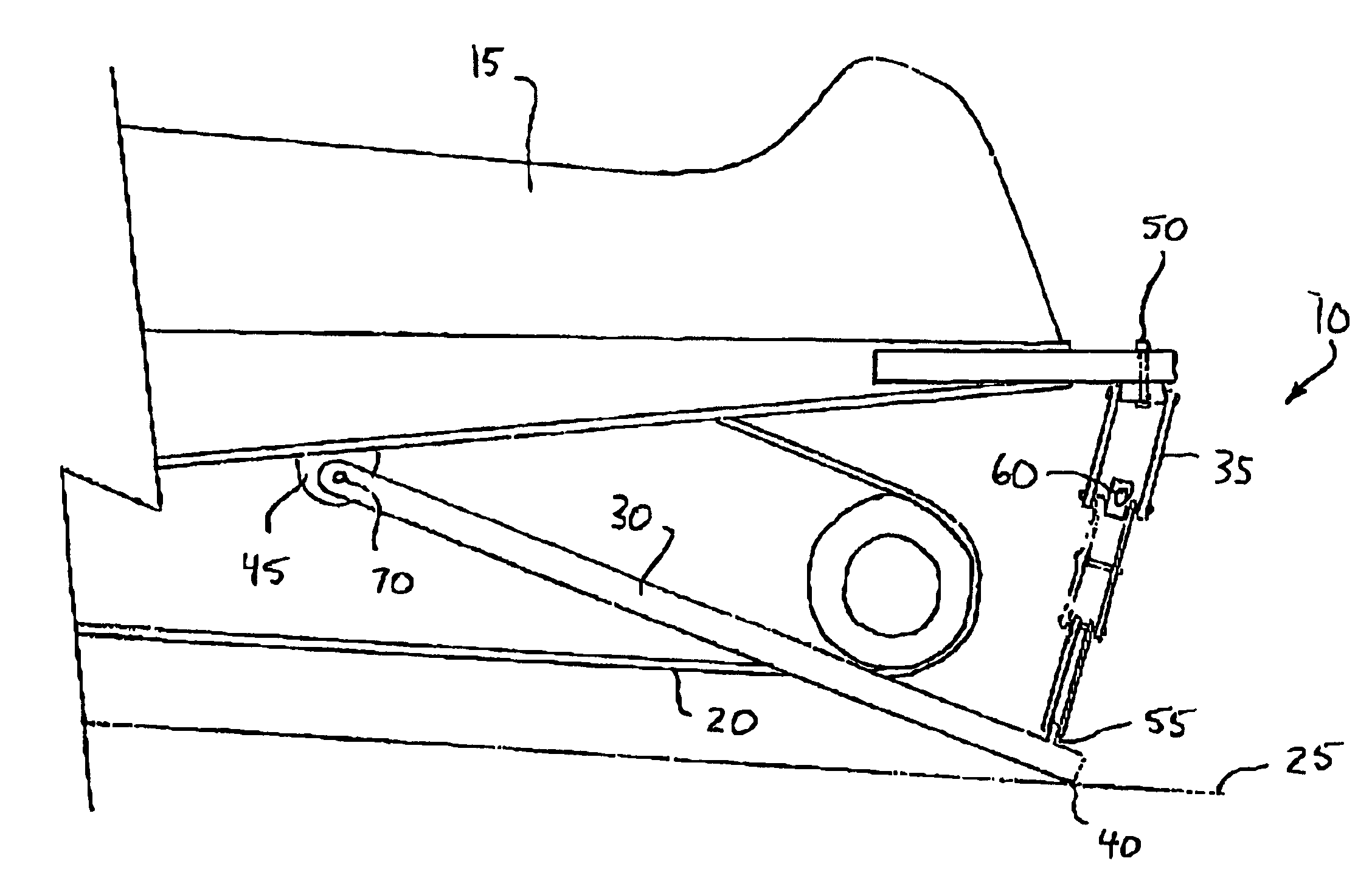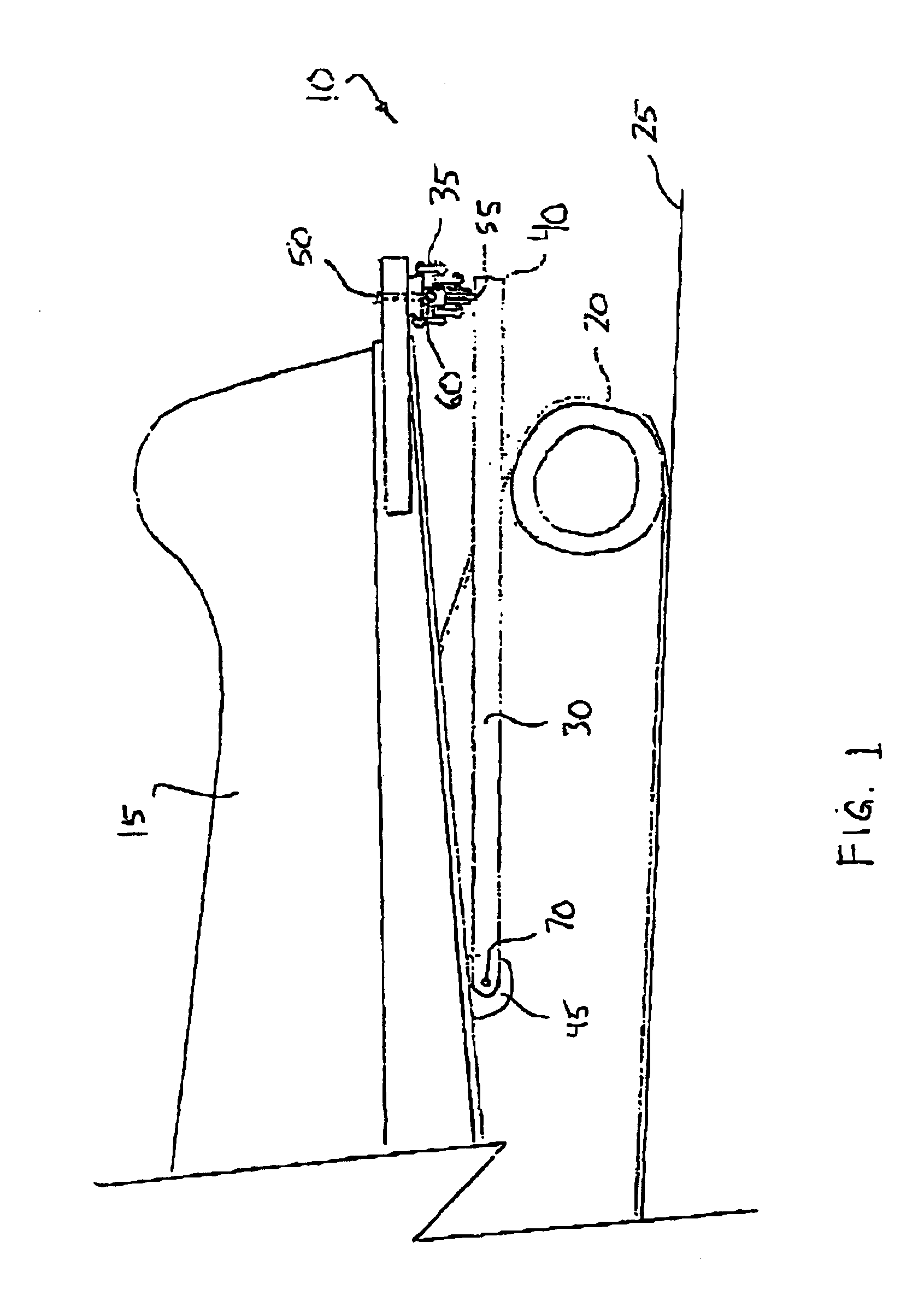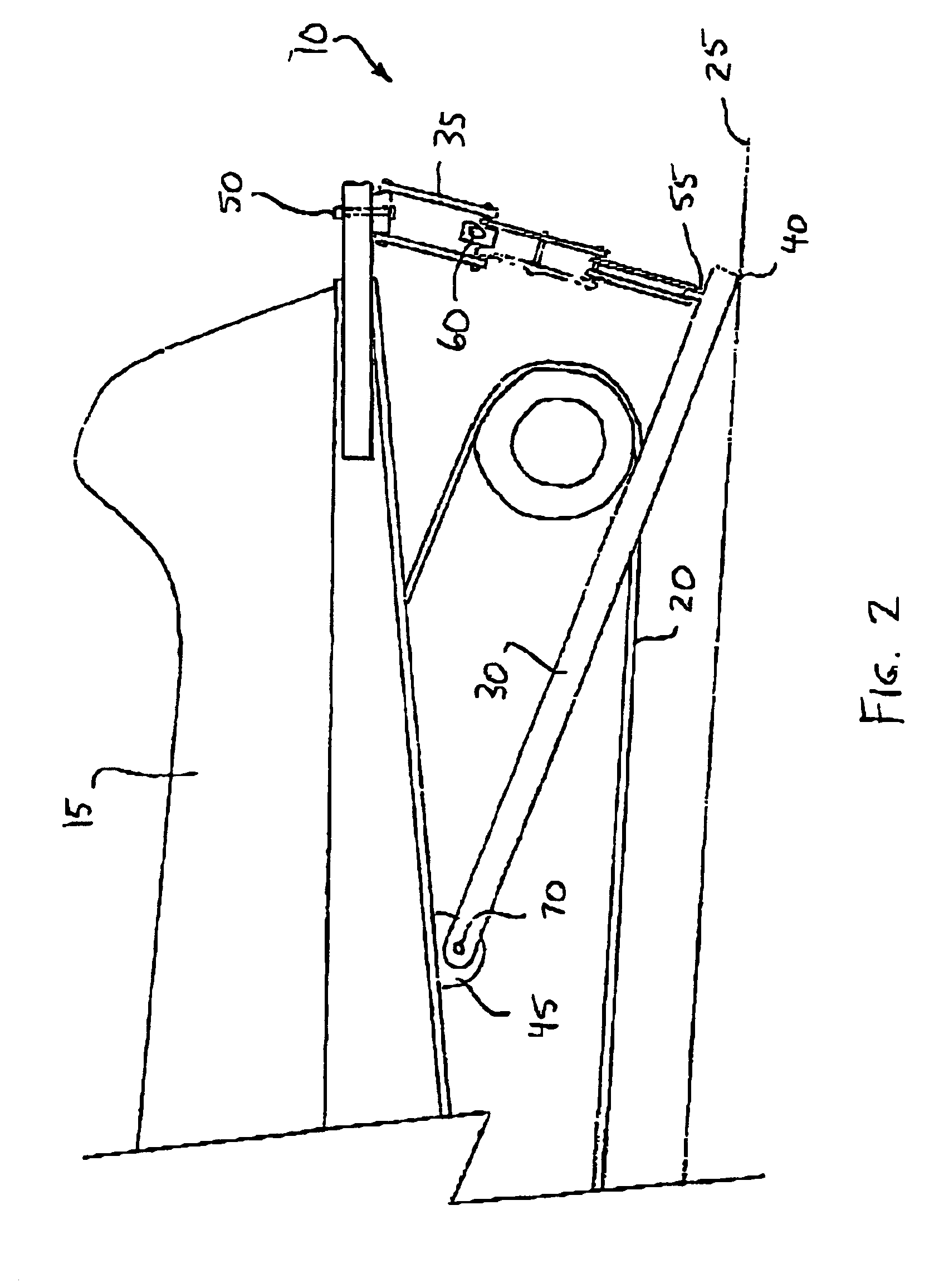Snowmobile elevation mechanism
a technology of snowmobiles and mechanisms, applied in vehicle maintenance, vehicle cleaning apparatuses, cycle equipment, etc., can solve problems such as complicated solutions, drive track freezing to slide rails, so as to prevent the refreezing of drive tracks and safely elevate snowmobiles
- Summary
- Abstract
- Description
- Claims
- Application Information
AI Technical Summary
Benefits of technology
Problems solved by technology
Method used
Image
Examples
Embodiment Construction
[0028]Referring now in detail to the accompanying drawings, there is illustrated an exemplary embodiment of the snowmobile elevation mechanism of the present invention generally referred to by the numeral 10, shown removably attached to a snowmobile 15, said snowmobile 15 of a common type familiar to those skilled in the art and requiring no further description. The snowmobile 15 is driven by a drive track 20 for driving the snowmobile 15 over the ground surface 25. As can best be seen in FIGS. 1 and 2, the elevation mechanism 10 comprises a stabilizer brace 30, a stabilizer brace mount 45 (one on either side of the snowmobile 15, as can best be seen in FIG. 3) pivotally mounting the stabilizer brace 30 at a pivot point 70, and an extensible lifting mechanism. The stabilizer brace 30 has a ground-engaging edge 40 which engages the ground surface 25 when the elevation mechanism 10 is in the use position as in FIG. 2. The extensible lifting mechanism is a scissors jack 35 in the exemp...
PUM
 Login to View More
Login to View More Abstract
Description
Claims
Application Information
 Login to View More
Login to View More - R&D
- Intellectual Property
- Life Sciences
- Materials
- Tech Scout
- Unparalleled Data Quality
- Higher Quality Content
- 60% Fewer Hallucinations
Browse by: Latest US Patents, China's latest patents, Technical Efficacy Thesaurus, Application Domain, Technology Topic, Popular Technical Reports.
© 2025 PatSnap. All rights reserved.Legal|Privacy policy|Modern Slavery Act Transparency Statement|Sitemap|About US| Contact US: help@patsnap.com



